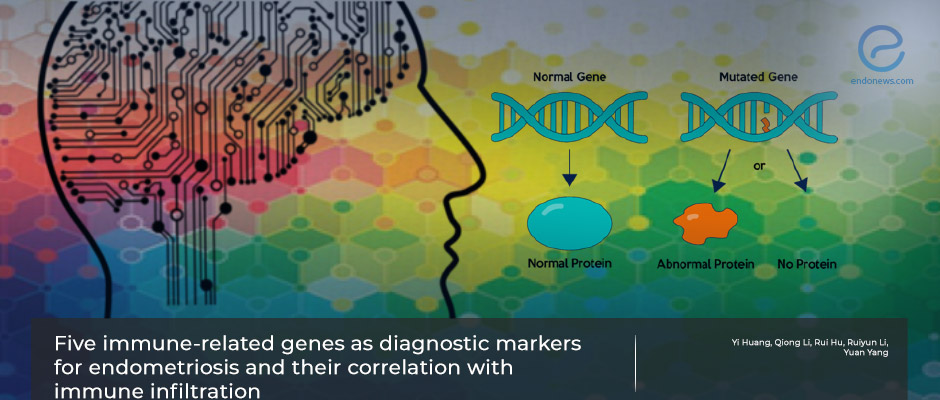Machine learning based potential biomarkers
Jan 16, 2023
A machine-learning-based evaluation of the differential expression, immune infiltration, and interactions of endometriosis-related genes
Key Points
Highlights:
- The differential gene expression between the uterine lining and endometriosis tissues was compared to explore the "potential mechanism targets" to be selected as diagnostic markers in the future.
Importance:
- The machine learning-supported analysis may allow for providing a diagnostic apparatus if findings are supported by future studies.
What's done here:
- The researchers analyzed the differentially expressed genes between eutopic and ectopic endometrium by using a public functional genomics database (Gene Omnibus-GEO) database.
- To compare the differences in immune genes and immune cells, the CIBERSORT dataset was used.
- The authors used machine learning algorithms to investigate the potential mechanism targets and created ROC curves-sensitivity-specificity analysis to find "diagnostic markers".
Key Results:
- The analysis identified 332 differentially expressed genes between the ectopic and eutopic endometria.
- The differences were in gene groups concerning cell proliferation, metabolism, extracellular space, integrin, complement activation, folic acid metabolism, interleukin, and lipid signaling pathways.
- The regression analysis outlined the important gene packages and 5 genes (ACKR1, LMNB1, MFAP4, NMU, and SEMA3C) gave the diagnostic value.
- The analysis of correlations between these markers and different immune cells clarified that the differences are related to M1 macrophages and natural killer cells.
Limitations:
- The study is based on dataset analysis those limits talking about in-person comparisons thus the findings should be checked out with clinical studies.
Lay Summary
To explore potential biomarkers for an accurate diagnosis and treatment, and to elucidate the mechanism of endometriosis, Yi Huang et al, analyzed gene differences between eutopic and ectopic endometrium and the status of the immune microenvironment., and published their results in the scientific journal named "Frontiers in Endocrinology".
A variety of machine learning algorithms were applied for feature selection to screen for diagnostic markers. From the public functional genomics database named Gene Omnibus, the endometriosis-related datasets were downloaded and DEGs between eutopic and ectopic endometrium were analyzed. Then to compare immune cell infiltration, correlations, and their differences CIBERSORT was used. Finally, the researchers created ROC curves/ sensitivity specificity analysis to find out the diagnostic markers.
332 DEGs were found in endometriosis using bioinformatics methods; 156 were upregulated and 143 were downregulated immune-related genes. Functional analysis revealed that they were significantly enriched during the cell cycle and played a key role in endometrial cell mitosis, chromosome separation, nuclear division, and intracellular compound binding.
The study identified 332 differentially expressed genes and 10 hub genes that are different between ectopic and eutopic endometrium. These differences were in the gene groups concerning endometrial cell proliferation, cell metabolism, extracellular space, integrin, complement activation, folic acid metabolism, interleukin, and lipid signaling pathways. When the regression analysis was used to outline the gene packages that give the best diagnostic value, 5 genes (ACKR1, LMNB1, MFAP4, NMU, and SEMA3C) were detected. The analysis of correlations between these diagnostic markers and different immune cells showed that these differences are mainly related to M1 macrophages and natural killer cells.
The authors mentioned that their results may provide a framework for the development of pathological molecular networks in endometriosis, and added that in future studies, they want to verify the accuracy of the results of the present study at the molecular, cellular, and tissue levels and further explore the regulatory relationship between the five diagnostic markers, NK cells, and M1 macrophages.
Research Source: https://pubmed.ncbi.nlm.nih.gov/36277723/
M1 macrophage NK cell immune microenvironment gene proliferation integrin complement lipid signaling inerleukin

